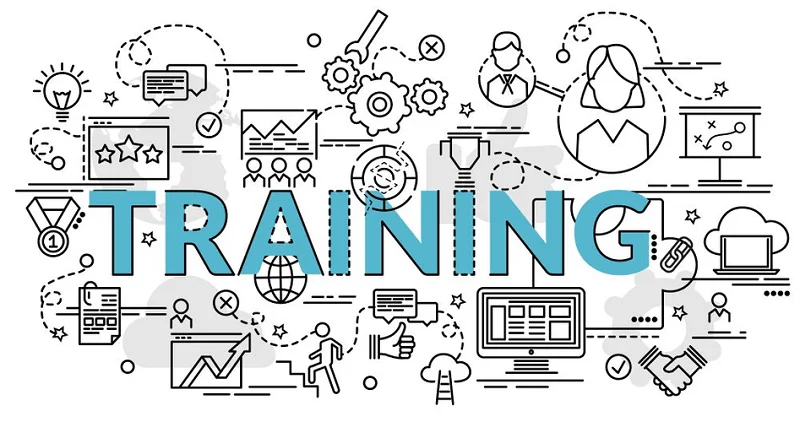Six Effective Strategies for Integrating Machine Learning Into Business Operations
When machine learning was a small discipline, locally owned, and contained in divisions and functions by a small group of experts, this entire process happened quietly, even smoothly, and was manageable. As AI and ML started getting to the core of enterprise transformations and bearing expectations of being sustainable at scale, there came the need for them to track to a fully functional development, operationalization, and automation cycle. Machine learning is a complicated technology that requires substantial expertise. Unlike some other technology domains, where software is mostly plug and play, machine learning forces the user to think about why they are using it, who is building the tools, what their assumptions are and how the technology is being applied. There are few other technologies that have so many potential points of failure. From improving customer experience to developing products, there’s almost no area of the modern business untouched by machine learning.

One of the applications of machine learning in business is image classification. Image classification is a way of categorizing a set of images into some predefined categories. Image classification has myriad applications in business such as social media, i.e., facebook photo tagging, medical image diagnosis, a 3D plan based on 2D image designs, etc. Facebook, the world’s biggest social media platform, utilizes artificial intelligence, machine learning, and deep learning to such a point that they have developed platforms and frameworks for creating AI. In addition to this, the company has also expressed its plans to develop an in-house, specialized chip for AI tasks.
Dynamic job-shop scheduling using reinforcement learning agents
Another tactic that can help late entrants become competitive is to redefine what makes a prediction “better,” even if only for some customers. In radiology, for example, such a strategy could be possible if there is market demand for different types of predictions. Early entrants most likely trained their algorithms with data from one hospital system, one type of hardware, or one country. By using training data (and then feedback data) from another system or another country, the newcomer could customize its AI for that user segment if it is sufficiently distinct.
- However, as essential to a company’s success as BI is, many businesses don’t take advantage of the tools that can improve their BI efforts.
- A recommendation engine is one of the most interesting and widespread applications of machine learning in business.
- ML models can also be programmed to rate sentiment on a scale, for example, from 1 to 5.
- AI models can degrade over time or in response to rapid changes caused by disruptions such as the COVID-19 pandemic.
- At present, analytics are trying to apply artificial intelligence (AI) into all kinds of business fields.
Improved decision-making ranked fourth after improved innovation, reduced costs and enhanced performance. Join us today — unlock member benefits and accelerate your career, all for free. Transform your organization with Calm Business’ advanced HR features and elevate your approach to employee well-being.
Effective data generation for imbalanced learning using conditional generative adversarial networks
The online help desk is one of the exciting applications of artificial intelligence in business. It would be more interesting if we can speak with the chatbot rather than sending a message. This article is an executive-level strategic proposal toward digital transformation by embracing AI and RPA on the cloud for finance, https://www.globalcloudteam.com/ risk and regulatory compliance in large banks. Some of the risks can manifest themselves as short-term profitability but can eventually lead to the bank’s demise. The advancement of AI and the changes toward open banking add new dimensions and challenges to the market turbulence, systemic risks and many uncertainties.

And, machine learning (ML) is the study of developing an intelligent and autonomous machine or device. Undoubtedly, there are numerous unimaginable applications of artificial intelligence and machine learning in business. AI improves search results by using natural language processing (NLP) techniques. Another more significant benefits of using artificial intelligence in e-commerce business is that re-targeting the potential customers. A recommendation engine is one of the most interesting and widespread applications of machine learning in business. You ask the boy for a product or an item, and he will see you not only this product but also the related products.
AI and Machine Learning Algorithms, Methods and Techniques
They work off preprogrammed scripts to engage individuals and respond to their questions by accessing company databases to provide answers to those queries. Masood pointed to the fact that machine learning (ML) supports a large swath of business processes — from decision-making to maintenance to service delivery. Businesses need to carefully plan and manage technology disruptions and ML is no different ai implementation process in that respect. If you want to get the most out of your business data and automate processes, the time is ripe for creating an ML strategy in your organization. Following the simple VDOCR (Vision, Data, Organization, Change and Revalidation) model will help your organization take its first step towards an ML implementation that considers cultural implications and delivers business value.
«Adjust algorithms and business processes for scaled release,» Gandhi suggested. Websites recommending items you might like based on previous purchases are using machine learning to analyze your buying history. Retailers rely on machine learning to capture data, analyze it and use it to personalize a shopping experience, implement a marketing campaign, price optimization, merchandise planning, and for customer insights. The most important aspect of building ML models is that we teach them, we do not code them.
An online machine learning framework for early detection of product failures in an Industry 4.0 context
However, as essential to a company’s success as BI is, many businesses don’t take advantage of the tools that can improve their BI efforts. A steering committee vested in the outcome and representing the firm’s primary functional areas should be established, she added. Instituting organizational change management techniques to encourage data literacy and trust among stakeholders can go a long way toward overcoming human challenges.

With AI, machines can perform manual tasks effortlessly, and that’s why it becomes a reliable approach to a company, whatever the company’s size and budget. Another most splendid application of artificial intelligence (AI) in business is dynamic pricing or demand pricing. It is a process of e-commerce pricing strategy of a product or item based on the interest level of the target customer through the use of big data. A proactive reach through AI can search patterns based on customer’s behavior and then can take appropriate actions to achieve the desired goal.
Best Travel Insurance Companies
At present, analytics are trying to apply artificial intelligence (AI) into all kinds of business fields. So, the business may evaluate more precisely than the traditional market research process. The buzzwords artificial intelligence (AI) and machine learning (ML) has been applied in a wide range by innovative AI and machine learning companies. These companies use the power of artificial intelligence in business to bring a new dimension. Below we are narrating 15 examples of artificial intelligence and machine learning in business. Most banks have started digital transformation to build data lakes and migrate applications onto cloud platforms.
The potential of prediction machines is immense, and there is no doubt that the tech giants have a head start. But it’s worth remembering that predictions are like precisely engineered products, highly adapted for specific purposes and contexts. If you can differentiate the purposes and contexts even a little, you can create a defensible space for your own product. Although the devil is in the details of how you collect and use data, your salvation rests there as well. Prediction machines exploit what has traditionally been the human advantage—they learn.
Privacy Sandbox: Envisioning Advertising After Google Kills off Third-Party Cookies
The system is not told the «right answer.» The algorithm must figure out what is being shown. For example, it can identify segments of customers with similar attributes who can then be treated similarly in marketing campaigns. Or it can find the main attributes that separate customer segments from each other. Popular techniques include self-organizing maps, nearest-neighbor mapping, k-means clustering and singular value decomposition.